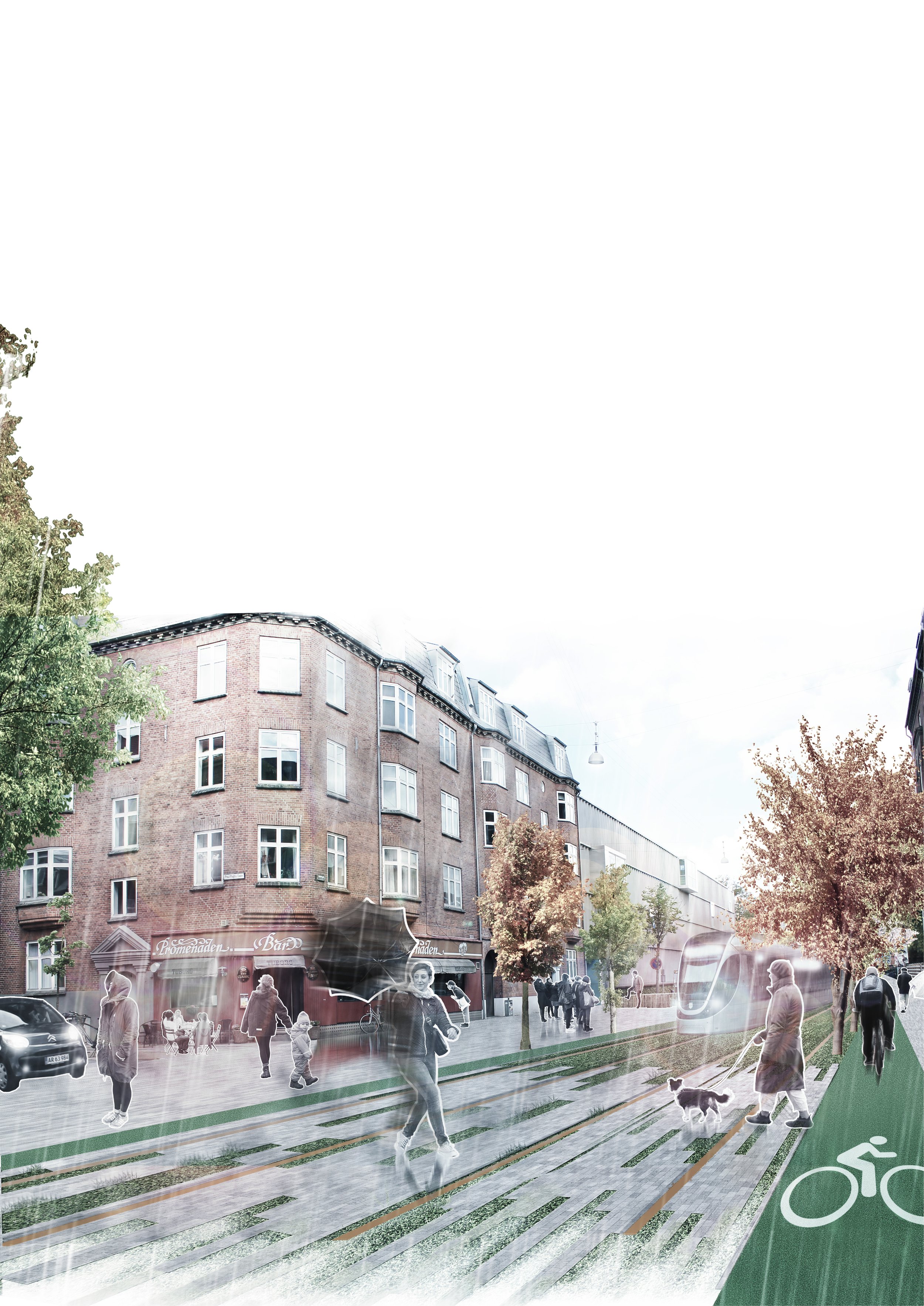Location: Aalborg, Denmark
Type: Master’s Urban Architecture Project
Design: Light Rail System and Green Corridor Development
Team: Oana Maria Paraschiv & Colleagues
Completion: 2015
CONCEPT | The Green Railscape project envisions the integration of a light rail system into Aalborg’s urban fabric while creating a green corridor that fosters connectivity and ecological sustainability. The concept is rooted in the idea of transforming transportation infrastructure into a multifunctional space that not only enhances mobility but also promotes environmental resilience and urban biodiversity.
URBAN CONCEPT | The light rail system is designed to connect key areas of Aalborg, reducing traffic congestion and providing an efficient, sustainable mode of transportation. The rail corridor serves as a linear park, linking neighborhoods through green pathways, cycling routes, and pedestrian-friendly environments. This creates a seamless flow between transport and recreation, allowing residents to use the rail corridor as both a transit route and a green escape within the city.
LANDSCAPE CONCEPT | The green corridor along the rail line incorporates native vegetation, wetlands, and ecological zones that enhance urban biodiversity. The landscape design creates a natural buffer around the rail tracks, improving air quality and mitigating the heat island effect. The green spaces act as habitats for wildlife while offering recreational areas for residents, fostering a connection between nature and urban living.
TECHNIQUES | The design utilizes sustainable infrastructure, including permeable surfaces, stormwater management systems, and green roofs. These techniques ensure that the rail corridor is environmentally resilient, capable of managing rainwater and reducing urban runoff. Additionally, biophilic design principles are applied to create a harmonious relationship between the built environment and nature, ensuring that the infrastructure serves ecological as well as functional purposes.
SUSTAINABILITY | Sustainability is at the heart of the Green Railscape project, with a focus on reducing the environmental footprint of urban transport while enhancing green spaces. The integration of ecological zones and stormwater systems promotes biodiversity, reduces pollution, and provides a healthier living environment. By merging mobility with ecological resilience, the project sets a new standard for sustainable urban infrastructure.
Green Railscape exemplifies the potential of transportation corridors to serve as green lifelines, balancing the need for efficient mobility with the demands of environmental sustainability and urban livability.













